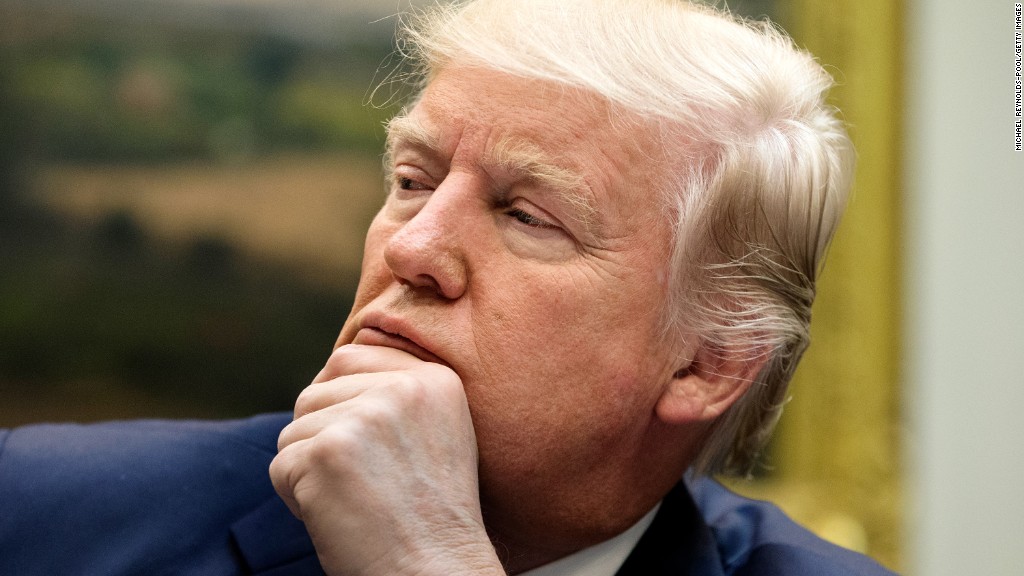
President Trump's "skinny" budget blueprint for 2018 features a proposed $54 billion increase in defense spending and an equal number of spending cuts from the smallest part of the federal budget.
That means his changes won't add to next year's projected $487 billion deficit. But they won't reduce it, either.
White House Budget Director Mick Mulvaney characterized Trump's proposals as an example of the president's "historic" commitment to fiscal responsibility.
"Not since early in President Reagan's first term have more tax dollars been saved and more government inefficiency and waste been targeted. ... Our $20 trillion national debt is a crisis, not just for the nation, but for every citizen," Mulvaney said in a statement attached to the budget blueprint, which was released Thursday.
But the savings proposed are already allocated to pay for something else.
Independent deficit hawks always like when proposed spending increases are paid for. But their broader concern is how a president proposes to tackle the long-term growth rate in the country's overall debt.
Trump's skinny budget is silent on that.
Presumably his fuller budget proposal, expected in May, might address that. But it will be interesting to see what he says about entitlement spending -- a leading driver of debt long term.
To date, Trump has said point blank he won't touch the two biggest entitlement programs -- Medicare and Social Security.
Related: How the U.S. would look under Trump's budget
In the meantime, how he proposes to pay for his new spending matters, a lot. Is it feasible? And is it the best way to balance competing objectives?
"All of the cuts come from a shrinking slice of the pie: nondefense discretionary spending, which accounts for only 15% of all federal spending and 5% of projected spending growth over the next ten years. Such aggressive domestic discretionary cuts will be hard to sustain given that this area of the budget has already undergone large cuts and is projected to grow more slowly than inflation," said Maya MacGuineas, president of the Committee for a Responsible Federal Budget.
The spending cuts that Trump proposes come from those agencies that fund education programs, social services, environmental protection, health research, housing and food assistance, national parks, land management, and countless other endeavors.
As it is, spending on nondefense discretionary programs is already historically low. As a share of the economy it's at its lowest level since 1998 and is well below where it was 50 years ago, according to data from the Congressional Budget Office.
And in many instances, those agencies are already working with fewer dollars than they used to. The Environmental Protection Agency -- funding for which Trump has proposed cutting by 31% -- is already operating with $2 billion less than it had in 2010, according to the Bipartisan Policy Center.
The IRS is now operating with about $900 million less than it got seven years ago. Trump wants to cut its budget by another $239 million.
And the Bipartisan Policy Center also found that lawmakers have been spending less money compared to several years ago on education and health research and training, pollution control, job training, and community development. Many of those areas would see cuts under Trump's budget.
Meanwhile, within 20 years, CBO projects that entitlement spending plus interest -- which are the primary drivers of the country's long-term debt -- will suck up virtually every tax dollar coming into the federal government, up from 65% today.


